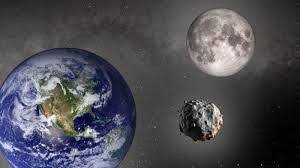After months of observations and calculations by experts in astronomy, it’s certain that our little blue planet (Earth) will have a brief, unexpected dance partner.
Astronomers have discovered a small asteroid named 2024 PT5, which will be temporarily captured by Earth’s gravitational pull.
Starting September 29th, this celestial interloper will become our planet’s ‘mini-moon’ for a fleeting two months, before gracefully slipping back into the depths of space.
This cosmic event, though short-lived, offers a unique opportunity for scientists. While ‘mini-moon’ captures are relatively frequent, occurring multiple times per decade, long-term events are far rarer.
2024 PT5 is from the Arjuna asteroid group, a collection of space rocks that share a similar orbit around the sun as Earth.
It’s this shared path that allows for these temporary orbital entanglements. At an estimated 37 feet in diameter, 2024 PT5 could be significantly larger than the asteroid that exploded over Chelyabinsk, Russia, in 2013.
However, there’s no need for alarm. This mini-moon will maintain a safe distance of 2.6 million miles from Earth, roughly ten times further away than our permanent lunar companion.
Although backyard astronomers won’t be able to catch a glimpse of this dim visitor, professional with high advance telescopes will be able to capture 2024 PT5, gathering valuable data about its size and trajectory.
These observations will not only shed light on this particular asteroid, but also contribute to our broader understanding of these temporary cosmic companions.
After its brief dance with Earth, 2024 PT5 will continue its journey around the sun. It’s expected to make another close flyby of our planet in January 2025 and is predicted to return as a mini-moon in 2055 and again in 2084.
So, while this particular cosmic waltz may be short-lived, it’s certainly not the last we’ll see of this intriguing space rock.
This cosmic event is symbol of a dynamic and ever-changing nature of our solar system. It shows us that there are more discoveries that await us in the vast expanse of space, and the endless wonders that continue to unfold above our heads.














